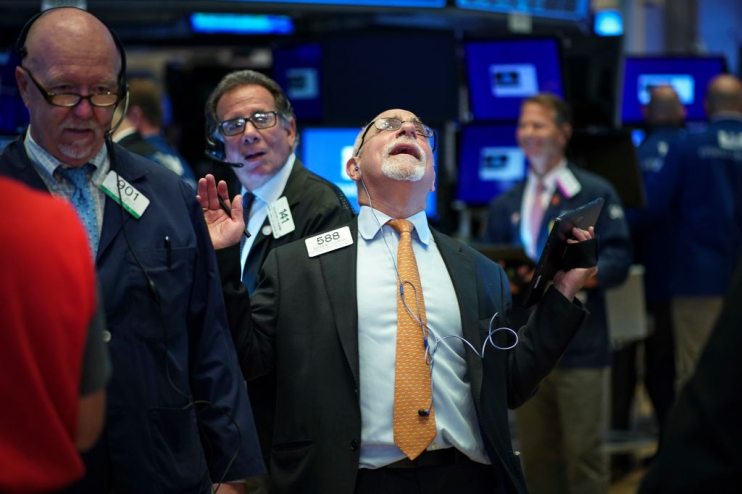Bond yields are rising. Here’s why markets are worried about what’s next.

Concerns are growing that the rise in government bond yields around the world will have knock-on effects throughout the financial system.
Having spent over a decade at historically low levels, yields on government bonds have started rising at a worryingly fast pace.
But what are yields and why do they risk causing so much damage to the financial sector?
Yields and bonds
Governments issue debt, bonds, to help pay for public services and investment programmes.
To attract investors, bonds pay out a yield. A yield is the annual return that an investor gets on a bond, expressed as a percentage of the bond’s value. When the price of a bond falls, the yield rises.
Yields have been rising a lot recently as investors dump government bonds. At the end of last week, the yield on the 10-year US Treasury bond climbed to more than five per cent for the first time since 2007.
In the UK the yield on the 10-year gilt, just over 4.7 per cent, stood at its highest level since 2008. The yield on the 30-year gilt, meanwhile, is at its highest level since 1998.
Yields in the eurozone have climbed to the highest levels since the eurozone crisis in 2011. All of these shifts have taken place fairly rapidly, with a particular acceleration over the past two or three months.
Why have yields risen?
There are a few different reasons why bond yields have risen. The dominant explanation is that markets have finally bought into the “higher-for-longer” narrative that central banks have been peddling for a number of months now.
Having previously been hopeful that rates would fall back to historically low levels, stubborn inflation and resilient economies have raised the prospect that central banks will not start cutting interest rates until next year.
With markets expecting rates to remain higher, investors want a higher return from other assets too.
Another culprit is the rise of structural fiscal deficits. Governments are simply having to borrow more to fund public services, which are creaking under the weight of growing demand in the West’s ageing economies.
Neil Wilson at Finalto calls this the “bigger-for-longer” narrative. Combine this with the unravelling of quantitative easing — when central banks scooped up government bonds to keep yields low — and there’s suddenly a glut in supply.
Why should we care?
The government bond market is the largest in the world. Volatility risks destabilising some very big players in the global economy.
Vicky Redwood, senior economic adviser at Capital Economics, said the surge in bond yields poses the greatest risk to those countries where “the government’s commitment to fiscal rectitude over the medium term is in question.”
Policymakers in the UK got a reminder of this last year after Liz Truss’s mini-budget, when bond markets punished the government for reckless spending programmes.
Some analysts have raised questions about the ability of the US to pay back its debts given the recurring drama over the debt ceiling.
Gordon Shannon, portfolio manager at Twentyfour Asset Management, said investors were starting to demand a premium on US debt, even if he stressed it’s “not going full Venezuela just yet”. But Shannon did suggest Italy was the “one to watch”.
Markets have dumped Italian sovereign debt over concerns that Giorgia Meloni’s government is facing widening fiscal deficits. Yields are at their highest level since 2012.
Worryingly, fears over rising government debt could be a self-fulfilling prophecy. Nervy traders demand a greater return on government bonds, forcing governments to spend more on interest payments which sends government debt ever higher
But corporates are in danger too. Remember Silicon Valley Bank?
SVB stocked up on government bonds during the pandemic. These bonds then tanked in value in the following years as interest rates rose, leaving SVB with $15.9bn in unrealised losses.
Bank of America has $131.6bn in unrealised losses, although it is much bigger. It stresses that it’s nothing to worry about, but “what happens if people really start questioning the likes of BofA on their unrealised losses,” Wilson asked.
The likelihood of a blow-up from unrealised losses was unlikely while the Federal Reserve was willing to funnel money into endangered banks. However, Shannon pointed out that these pressures “are only getting worse”.